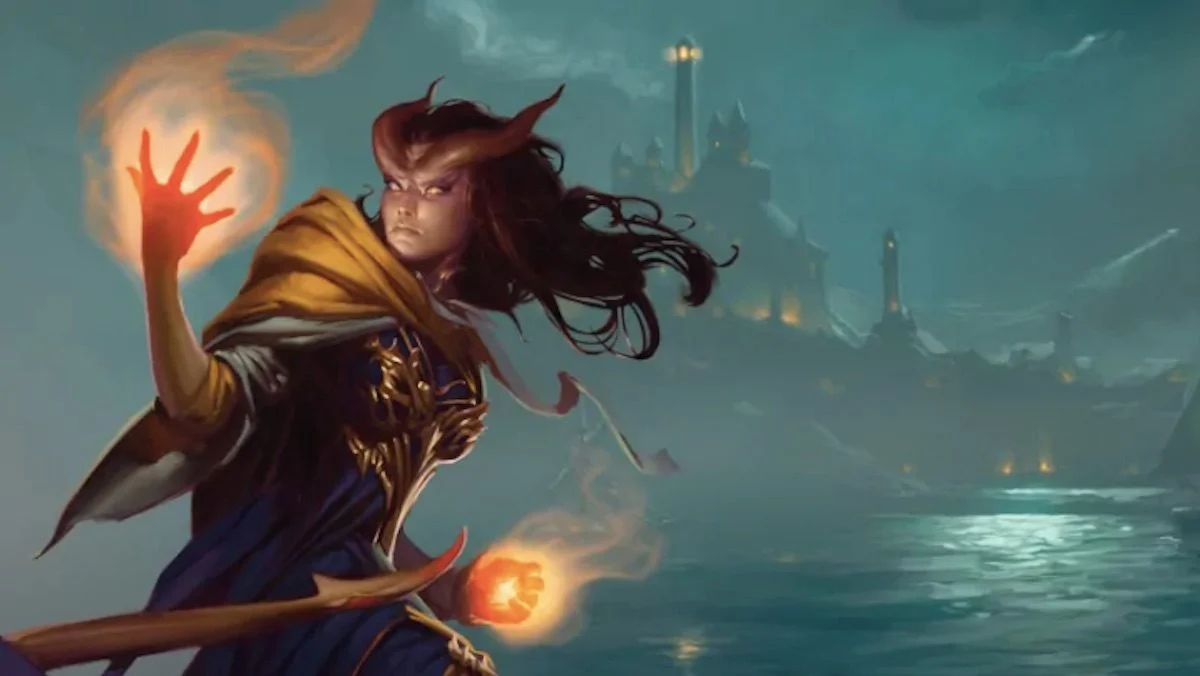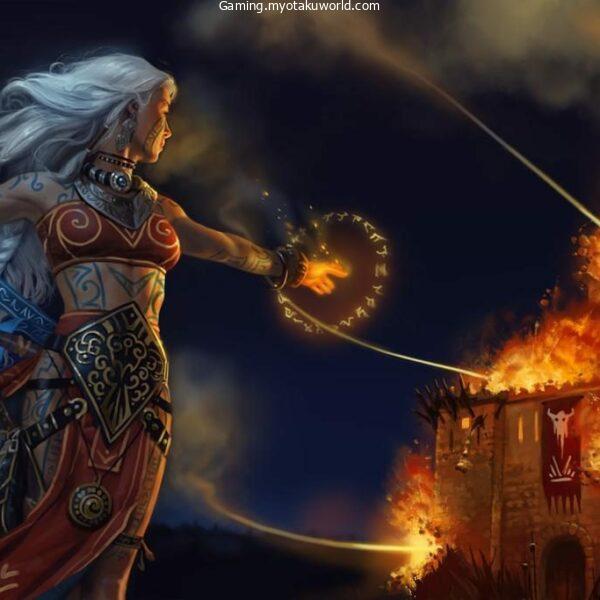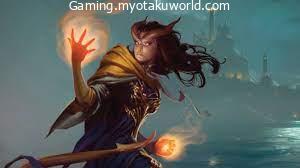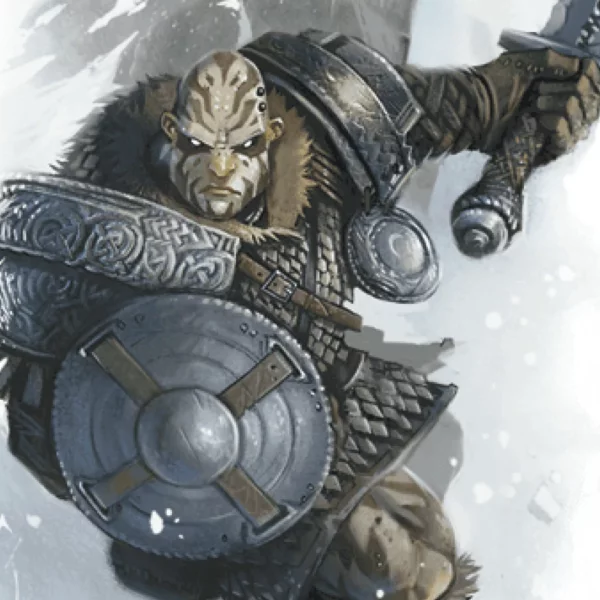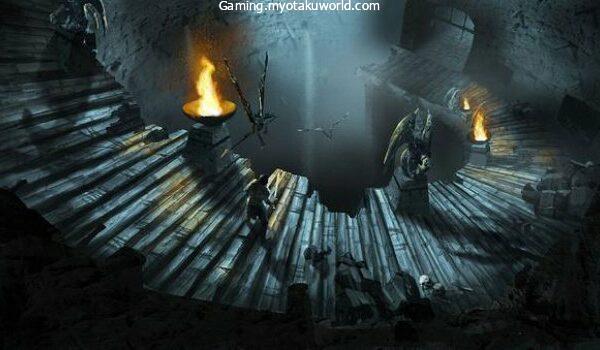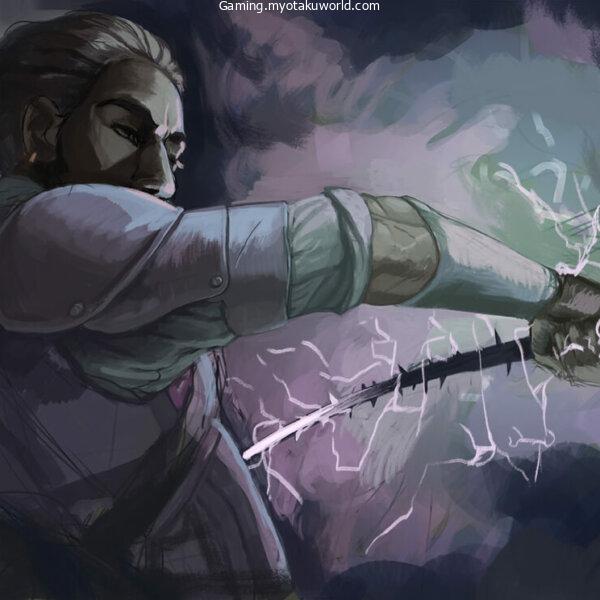Wizards dominate the battlefield and also the world around them.
They can access some of the strongest spells available in the game.
A skilled wizard is aware of how to utilize these spells.
I’ve created a list that outlines the Best Wizard Cantrips that every wizard must be aware of in D&D and how a skilled wizard can utilize these spells both inside and outside of combat.
- 25. Blight
- 24. Blink
- 23. Arcane Lock
- 22. Absorb Elements
- 21. Blade Ward
- 20. Control Flames
- 19. Poison Spray
- 18. Friends
- 17. Light
- 16. Lightning Lure
- 15. Frostbite
- 14. Minor Illusion
- 13. Prestidigitation
- 12. Acid Splash
- 11. Infestation
- 10. Ray of Frost
- 9. Gust
- 8. Mending
- 7. Chill Touch
- 6. Create a Bonfire
- 5. Toll the Dead
- 4. Message
- 3. Mold Earth
- 2. Fire Bolt
- 1. Mage Hand
25. Blight
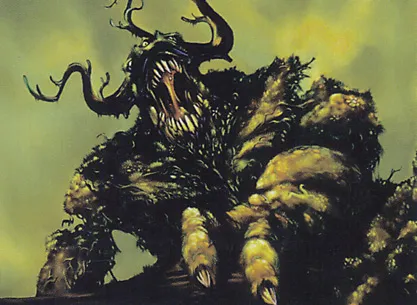
Source: Player’s Handbook
4th-level necromancy
Casting Time: 1 action
Range: 30 feet
Components: V, S
Duration: Instantaneous
Necromantic energy washes over a creature of your choice that you can see within range, draining moisture and vitality from it.
The target must make a Constitution saving throw. The target takes 8d8 necrotic damage on a failed save, or half as much damage on a successful one. This spell has no effect on undead or constructs.
If you target a plant creature or a magical plant, it makes the saving throw with disadvantage, and the spell deals maximum damage to it.
If you target a nonmagical plant that isn’t a creature, such as a tree or shrub, it doesn’t make a saving throw; it simply withers and dies.
At Higher Levels. When you cast this spell using a spell slot of 5th level or higher, the damage increases by 1d8 for each slot level above 4th.
24. Blink

Source: Player’s Handbook
3rd-level transmutation
Casting Time: 1 action
Range: Self
Components: V, S
Duration: 1 minute
Roll a d20 at the end of each of your turns for the duration of the spell. On a roll of 11 or higher, you vanish from your current plane of existence and appear in the Ethereal Plane (the spell fails and the casting is wasted if you were already on that plane).
At the start of you next turn, and when the spell ends if you are on the Ethereal Plane, you return to an unoccupied space of your choice that you can see within 10 feet of the space you vanished from.
If no unoccupied space is available within that range, you appear in the nearest unoccupied space (chosen at random if more that one space is equally near). You can dismiss this spell as an action.
While on the Ethereal Plane, you can see and hear the plane you originated from, which is cast in shades of gray, and you can’t see anything more than 60 feet away. You can only affect and be affected by other creatures on the Ethereal Plane.
Creature that aren’t there can’t perceive you or interact with you, unless they have the ability to do so.
23. Arcane Lock
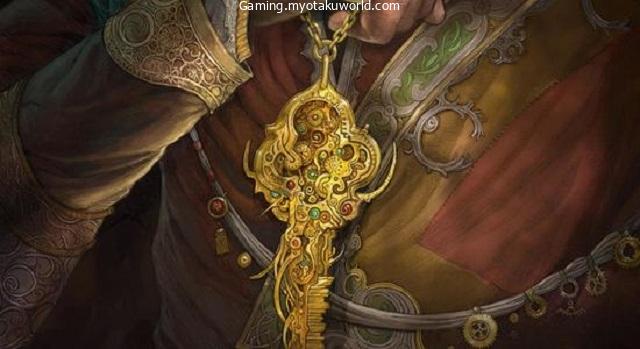
Source: Player’s Handbook
2nd-level abjuration
Casting Time: 1 action
Range: Touch
Components: V, S, M (gold dust worth at least 25 gp, which the spell consumes)
Duration: Until dispelled
You touch a closed door, window, gate, chest, or other entryway, and it becomes locked for the duration.
You and the creatures you designate when you cast this spell can open the object normally. You can also set a password that, when spoken within 5 feet of the object, suppresses this spell for 1 minute.
Otherwise, it is impassable until it is broken or the spell is dispelled or suppressed. Casting knock on the object suppresses arcane lock for 10 minutes.
While affected by this spell, the object is more difficult to break or force open; the DC to break it or pick any locks on it increases by 10.
22. Absorb Elements
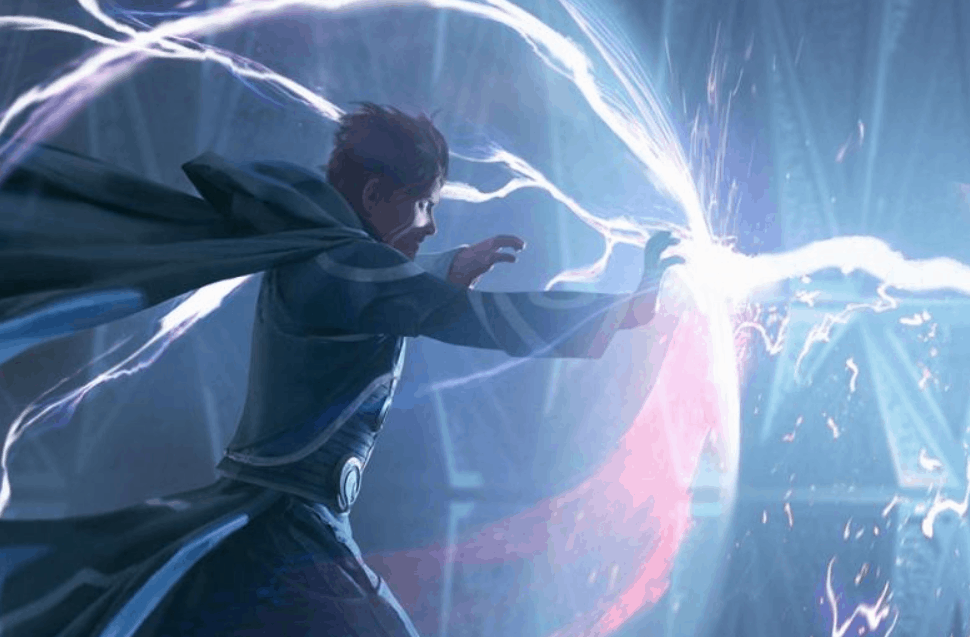
Source: Xanathar’s Guide to Everything
1st-level abjuration
Casting Time: 1 reaction, which you take when you take acid, cold, fire, lightning, or thunder damage
Range: Self
Components: S
Duration: 1 round
The spell captures some of the incoming energy, lessening its effect on you and storing it for your next melee attack.
You have resistance to the triggering damage type until the start of your next turn.
Also, the first time you hit with a melee attack on your next turn, the target takes an extra 1d6 damage of the triggering type, and the spell ends.
At Higher Levels. When you cast this spell using a spell slot of 2nd level or higher, the extra damage increases by 1d6 for each slot level above 1st.
21. Blade Ward
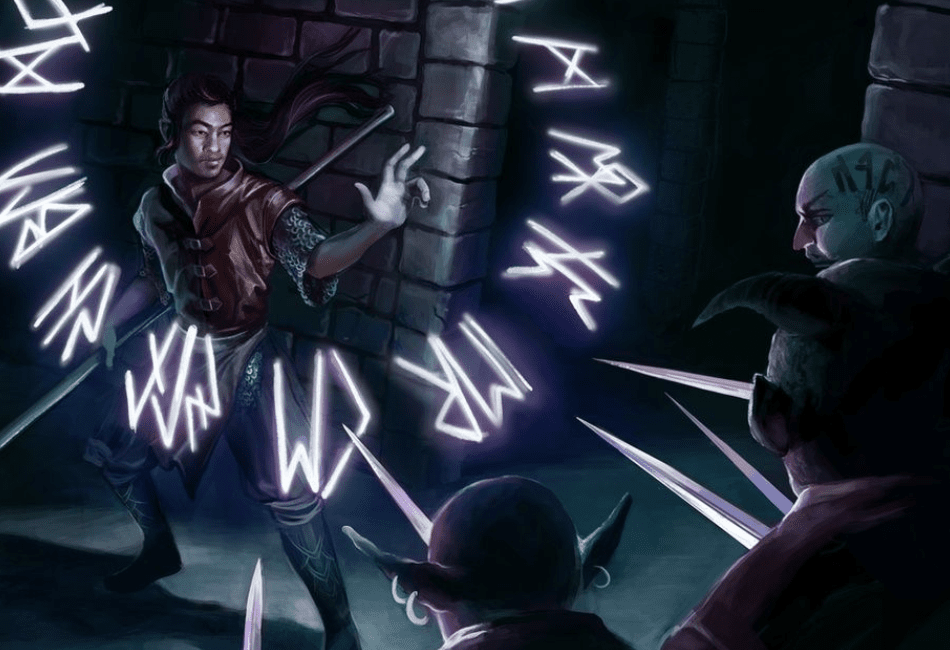
Source: Player’s Handbook
Abjuration cantrip
Casting Time: 1 action
Range: Self
Components: V, S
Duration: 1 round
You extend your hand and trace a sigil of warding in the air. Until the end of your next turn, you have resistance against bludgeoning, piercing, and slashing damage dealt by weapon attacks.
20. Control Flames

Source: Elemental Evil’s Player’s Companion 16. 16
Casting Time: 1 Action
The range: 60 feet
Components: Somatic
The time of the download: Instantaneous or 1 hour
The last item on the list is Control Flames.
Control Flames lets you accomplish exactly that: control certain (nonmagical) burning.
It is possible to expand it by five feet, but only one direction.
Place the fire in the 5ft cube, and create the light cast out of it more bright or dim or draw simple patterns within the flame itself.
Although it’s not the most powerful but it does allow wizards to manage their environment.
It’s not always a good idea. However, it may provide distinct combat options or roleplaying during your game.
19. Poison Spray

Source: Player’s Handbook p. 266
Casting Time: 1 Action
Band: 10 feet
Components: Verbal & Somatic
Duration: Instant
The very first destructive spell on this list Poison Spray forces the person in the target’s position to take a Constitution save throw or take an incredible 1d12 of damage.
The damage gets worse as time passes and the spell does not perform much more than this.
This is the reason it’s not on our list of top choices.
18. Friends

Source: Player’s Handbook p.244
Casting Time: 1 Action
Range: Self
Contents The material, the somatic (A tiny amount of makeup can be applied on the face when it is being cast)
Time: Concentration for up to one minute
An ideal way to make a “friend” and get an advantage in Charisma checks throughout the duration of the spell.
It is mostly a tool for role-playing.
The ability to make use of it to gain knowledge or get past annoying NPCs, or create other interesting situations to get your DM.
The downside (aside from the small-time) is that after the spell is gone it is the case that the person who is affected is aware that you applied a spell to them.
This allows DM the freedom to let the NPC react in the way they want however it can get messy.
17. Light

Source: Player’s Handbook p.255
Casting Time: 1 Action
Range: Touch
Parts of HTML0: Verbal, Material (a firefly or phosphorescent moss)
Duration: 1 Hour
One of the most useful spells that you could ever find, Light precisely does what it says.
It’s bright!
Parties that have little or no dark vision will love this spell because it is great to provide the ability to see in darker dungeons and also be able to get a magical light to stop the nonsense of things such as that dark illusion.
It’s also possible to cast light onto items belonging to other people in the event that they fail the Dexterity saving throw when they’re holding or wearing the object.
16. Lightning Lure

Source: Sword Coast Adventurer’s Guide p.143
Casting Time: 1 Action
Distance: 15 feet
Components: Verbal
Duration: Instantaneous
A spell that I didn’t know existed until I did my research in this post.
Lightning Lure offers a little some crowd control and also the possibility of causing damage to opponents.
Being able to simply draw a target in your direction by 10 feet isn’t anything to laugh at.
In particular, when you consider that the vast majority of creatures found in the Monster Manual have pretty weak Strength saving throws.
15. Frostbite

Source: Elemental Evil Player’s Companion p.18
Casting Time: 1 Action
Range: 60ft
Components: Verbal, Somatic
Duration: Instantaneous
A simple technique for Wizards who wish to aid their team members, Frostbite forces the player to make a Constitution Saving Throw or take 1d6 cold damage in addition to giving the target a disadvantage when they next make a weapon attack roll.
With its good range and relatively small debuff, it does wonderfully in the majority of party dynamics during the initial game and also provides the possibility of affliction that is easy to deal with when the group grows in size.
14. Minor Illusion

Source: Player’s Handbook p.260
Casting Time: 1 Action
Distance: 30 feet
components: Materials, Somatic (a small amount of fleece)
Time: 1 minute
The first illusion spell that allows you to alter what others see, Minor Illusion mainly offers only role-playing options and is not used other than in combat.
But I am in love with the ability to use spells such as this.
Because it helps you, the participant, determine how to deal with an issue without having an easy answer.
Dungeon Masters who get involved and don’t restrict players to one answer create spells similar to these that are only limitless only by the imagination of your players.
13. Prestidigitation

Source: Player’s Handbook p.267
Casting Time: 1 Action
Distance: 10 feet
Components: Verbal, Somatic
Time: Up to 1 hour
One of the most absurd spells ever created, Prestidigitation lets you select up to three of six fun effects:
It creates a pleasant sensory experience such as sparks, a bit of wind, and a faint smell.
Instantly lighting or putting out small fires or torches.
Cleaning or spotting an object that is no greater than a cubic foot.
Warming, chilling or flavoring, or flavoring a material that is not a living product for up to one hour (pretty subject to change)
The process of creating a color mark, symbol, or color that is visible on a surface for an hour.
Make a nonmagical trinket or an illusionary image that fits into your palm until the next turn.
As you can see, this adventure can provide plenty for a single cantrip.
Similar to Minor Illusion, this spell is only dependent on your imagination and the extent to which your DM will let you go with it.
The power of a spell-like this could brighten up a dull event, or come up with innovative solutions you wouldn’t think of if you didn’t carry something similar to this in your pocket.
12. Acid Splash

Source: Player’s Handbook p.211
Casting Time: 1 Action
The range: 60 feet
Components: Verbal, Somatic
Duration: Instantaneous
The Wizard’s most affordable Area of Effect spell, Acid Splash allows you to make the creature (or two when they’re within 5′ of one another) make a Dexterity saving throw.
When they do fail, the smallest extent of harm, however, it’s still a great thing in any case.
11. Infestation

Source: Xanathar’s Guide to Everything p.158
Casting Time: 1 Action
Band: 30 feet
components: verbal, somatic, and material (a Living flea)
Duration: Instantaneous
A spell that causes harm and causes the target to move in an undetermined direction?
Please sign me up!
You bring a number of parasites that attack the target, causing them to make a Constitution Saving Throw.
In the event that they didn’t succeed, they will take 1d6 poison damage and you have to roll a d4 that forces the target to go in a cardinal direction.
The ability to disrupt an animal’s plan through forceful motion is quite powerful in contrast to the randomness.
It could put you and your group in danger, or just be able to protect someone’s hiding spot in the future.
10. Ray of Frost

Source: Player’s Handbook p.271
Casting Time: 1 Action
The range: 60 feet
Components: Verbal, Somatic
Duration: Instantaneous
Similar to Frostbite, Ray of Frost allows you to deal damage to your target and can also reduce the damage.
The reality is that Ray of Frost just requires you to make an attack roll. Frostbite makes the target save.
It’s a great tool that does good damage (1d8 against 1d6) plus the ability to reduce speed feature is useful to keep your enemies out as you and your group are fighting.
9. Gust

Source: Elemental Evil Player’s Companion p.19
Casting Time: 1 Action
Band: 30 feet
Components: Verbal, Somatic
Duration: Instantaneous
In the paper world, Gust doesn’t seem super strong.
Being capable of pushing an object to 10 yards away or creating harmless sensory effects that are similar to Prestidigitation and even pushing the smaller or medium-sized creature to the back by 5 feet doesn’t seem to be a lot.
Wizards do well in one thing that is more important than other classes: crowd control.
Spells such as Gust let you control the battlefield and create turns for your team members and you to stay secure, but also keep your enemies in the exact location you wish during battle.
Being in a position to do this (although to a limited degree) at no cost is a fantastic tool that should be used by every Wizard should ever overlook.
8. Mending

Source: Player’s Handbook p.259
Casting Time: 1 Minute
Range: Touch
Components include: verbal, and somatic Materials (two lodestones)
Duration: Instantaneous
Another handy spell that may often go unnoticed is Mending lets you repair fractures and tears on any kind of object in the event that the damage doesn’t exceed 1 foot in any dimension.
This can open up a wide range of possibilities to tackle problems and puzzles on your way, which makes repairs another of those spells restricted to your own imagination.
7. Chill Touch

Source: Player’s Handbook p.221
Casting Time: 1 Action
Band: 120 feet
Components: Verbal, Somatic
Duration: 1 Round
Chill Touch is most likely the most poorly-named spell in D&D 5e.
It doesn’t demand you to touch anyone and it won’t cause any cold-related harm.
Although I rate this spell on Necromancy’s school, it has its merits.
After you’ve made a ranged attack, Chill Touch, lets you cause 1d8 damage to the person you are targeting.
The target isn’t able to regain hit points until the end of your turn.
This makes it an effective weapon against any opponent who heals in the fight.
Chill Touch also offers one of the most powerful ranges for a trip in the game and has twice the range of all the spells we’ve encountered thus far.
6. Create a Bonfire

Source: Elemental Evil’s Player’s Guide p.16
Casting Time: 1 Action
The range: 60 feet
Components: Verbal, Somatic
The duration: Concentration up to one minute
What if I said that you could light the entire world on the fire?
Well, to a degree.
This spell lets you create a magical bonfire inside every 5ft cube by igniting any flammable object that isn’t carried or worn.
In the event that a person is located in that space, or enters or ends their turn within the space, they need to make a Dexterity Saving Throw or suffer 1d8 damage from fire.
Create Bonfire allows you to do some things like hitting opponents (sometimes) or setting items on the fire.
You can also set the flames of a number of items on fire in a brief period of time.
5. Toll the Dead

Source: Xanathar’s Guide to Everything p.169
Casting Time: 1 Action
Distance: 60 feet
Components: Verbal, Somatic
Duration: Instantaneous
Another spell I discussed in my Necromancy Spells list, Toll the Dead is an extremely powerful spell that can be played as you can use.
You can force your target to make a Wisdom Saving Throw or they take necrotic damage of 1d8 (1d12 when they’re missing hitting points) which means that you can generate a significant amount of damage if you’re short on slots for spells.
4. Message

Source: Player’s Handbook p.259
Casting Time: 1 Action
The range: 120 feet
components: verbal and somatic Material (a shorter copper wire)
Time: 1 round
The message is among the spells that can be extremely useful, or ineffective.
The ability to send silenced messages between each other prove useful both inside and outside of combat scenarios.
It could also be an ineffective cantrip when you don’t find an application for it while playing.
If you’re looking to use this spell be sure to consider what your character’s plans are, to utilize the spell.
Perhaps it’s useful but it could also be an unusable slot. You should plan your build before deciding to use this slot.
3. Mold Earth

Source: Elemental Evil’s Player’s Guide p.21
Casting Time: 1 Action
Band: 30 feet
Components: Somatic
Time: Instantaneous, or 1 hour
Remember when I said you can accomplish an awful lot by using cantrips?
An excavator is a magical machine: Mold Earth.
You pick a section of stone or dirt that will fit in a 5-foot cube.
You have the option of choosing either of these:
You can cause colors, shapes, or both, to appear.
You can make images, words, shapes, or patterns that last for as long as an hour.
If you are targeting ground, you can transform it into difficult terrain, or vice versa when it is already difficult terrain.
The change is for one hour, and you may use two instances or have the first option active simultaneously.
The third option for this spell is slightly crazy
If you want to target an area of loose earth you can immediately dig it up and move it across the surface, and place it up to 5 feet away.
The movement isn’t sufficient to force for any damage.
Let’s think of a five-foot cube.
If it can help you, to think of an illustration, Emilia Clarke (Khaleesi from Game of Thrones) is around 5’2 inches and you can move one cube that is a bit smaller than the cube that is Khaleesi’s.
That’s quite a bit of dirt I’m telling you, my guys.
It’s quick and instantaneous.
Do you see that structure there?
That is its foundation was removed.
Do you need a place to sleep?
Just take a few minutes to build the cave in the style of Minecraft.
Are you in need of a ditch that will bring water to a slum?
It can be done in a flash.
Mold Earth One of the spells you can go beyond the limit.
I’m sure that you will never miss this spell.
2. Fire Bolt

Source: Player’s Handbook p.241
Casting Time: 1 Action
Band: 120 feet
Components: Verbal, Somatic
Duration: Instantaneous
Fire Bolt set the bar for any damage-only trip due to its having the most base damages for cantrips (1d10 flat, second only to Toll to the Dead’s damage bonus).
The cantrip also has the most powerful range of damage-only trips.
It’s the most frequently used damaged in a cantrip to any Wizard.
1. Mage Hand

Source: Player’s Handbook p.256
Casting Time: 1 Action
Band: 30 feet
Components: Verbal, Somatic
Time: 1 minute
The Mage Hand is most likely the only spell listed on this list that any wizard should use without a doubt.
Being capable of interacting with objects at an extended distance is essential.
This is another reason why it is only limited by your imagination.
Throw around a few objects that appear to be shabby? Done.
Inject tiles or other objects that appear to create traps? Easy.
Do you want to annoy your DM until the time is up? Absolutely.
